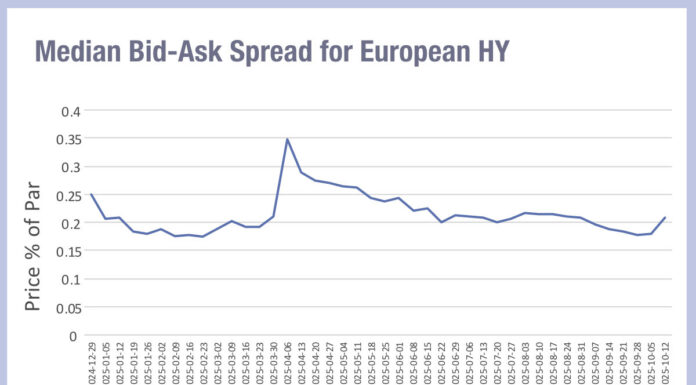The inclusion of a consolidated bond tape in the MiFIR review is welcomed, the International Capital Market Association (ICMA) says, but refinements need to be made in order to provide a “well-calibrated framework that enhances market outcomes while mitigating risks”.
The European Securities and Markets Authority’s (ESMA) MiFIR Review Consultation Package review closed for responses yesterday, and firms have weighed in with their opinions on proposed changes and the advent of a consolidated tape (CT) for EU markets.
Commenting on the review, EuroCTP stated that this was “an important milestone for the development of a consolidated tape in Europe.”
It continued: “A CT that is fit for purpose should support investor inclusion by providing a simple but comprehensive high-quality real-time view of the trading activity in the European Union, supporting professional market participants and retail investors alike. These elements are fundamental to delivering the best CT, in turn boosting European competitiveness and delivering on the ambitions of the EU’s Capital Markets Union”
Reflecting on the package, ICMA commented that the consolidated tape should optimise the scope of real-time post-trade transparency while protecting sensitive transitions and “reflecting the nature, structure, and liquidity of Europe’s bond markets”.
Looking at CT providers, the Association for Financial Markets in Europe (AFME) argued against revenue distribution for data contributors to a bond CT. “The voluntary approach that has been introduced should be just that and should not be awarded any special weighting in a tender application and should not be a determinant for progressing (or not) bond CTP applicants to the next stage of the selection process,” it affirmed.
Robust governance around CTs, warned the European Fund and Asset Management Association (EFAMA), recommending the introduction of a “full-fledged board with voting rights for a representative cross-section of stakeholders, including the user community” to determine pricing policies, fee structures, licensing policies, speed and connectivity.
Director general Tanguy de Werve noted: “Given that we are ever closer to the launch of bond and equity/ETF tapes in Europe, we are thinking ahead about how to futureproof the tapes. How do we ensure that conflicts of interest do not arise, that the tapes continue to meet the needs of a wide range of users, and that fees remain competitive? A robust governance framework with a stakeholder driven board is the best way we can think of to avert any of these negative outcomes.”
Considering other aspects of the proposals, ICMA recognised that achieving optimal calibration for as many bond classes and subclasses as possible, while avoiding overcomplexity, is challenging. As such, the association has outlined a number of recommendations based on “extensive statistical analysis” and advised a “data-driven approach” to reaching optimal calibration.
The four points outlined in ICMA’s recommendations include a more granular grouping of bonds, more clearly distinguishing between fixed coupon issuance of large sovereign issuers and sovereign bonds, and between investment grade and high yield credit.
AFME added that the current data analysis “overlooks similar analysis of undue risk; this will have a detrimental impact to the delicate balance between transparency and liquidity with wider, negative knock-on effects on investors and issuers”. Illiquid bonds are an area of particular concern. The association has presented an alternative framework that it says both supports ESMA’s goals while maintaining market liquidity and competitiveness.
The Federation of European Securities Exchanges (FESE) voiced its full support for ESMA’s goal of bringing approximately 90% of total orders and transactions under the definition of liquid bonds, stating that this would be a “significant improvement with respect to the previous regime”.
However, ICMA highlighted areas of improvement in this space and went on to say that the proposed post-trade deferral matrix should facilitate a more appropriate distinction between liquid and illiquid trade size thresholds.
It advocates for a more scientific approach to establishing the appropriate liquidity determinant, suggesting that although outstanding issuance size has been identified as the key variable factors including time to maturity and currency denomination should also be considered. Similarly, a more data-driven approach, based on historical traded average daily trading volumes, is needed to establish appropriate trade size thresholds for relevant deferral categories, the association added.
On the issue of liquidity, FESE shared its doubt that static thresholds will reflect the reality of the market. “Securities do not have constant liquidity and it changes based on market tendencies in various member states over the years,” it explained. However, it acknowledged that the outlined approach works to reduce complexity and works to reflect the Level 1 text.
Victoria Webster, managing director for fixed income at AFME, summarised: “AFME supports the objective of enhancing transparency in European bond markets, as it can lead to improved pricing and market participation. However, it is imperative the framework is carefully calibrated, with a strong focus on data analysis, particularly for less liquid segments of the bond market.”
©Markets Media Europe 2024
©Markets Media Europe 2025












